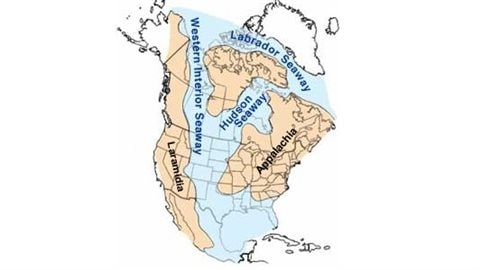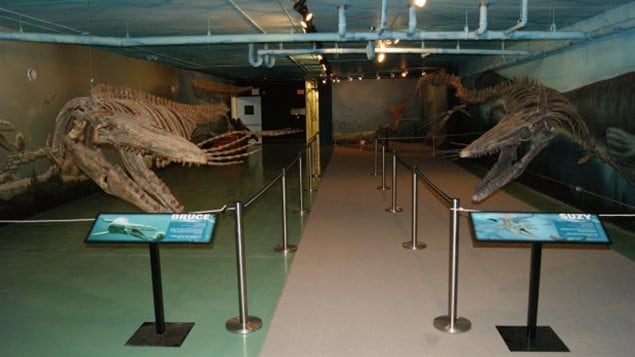With files from CBC
They would have been the terror of the seas, but fortunately that would have been about 70 million years ago.
The mososaurs were large fiercesome predators at the top of the food chain in the giant inland sea known as the Western Interior Seaway that divided the North American continent in two.
The Canadian Fossil Discovery Centre in Morden, Manitoba, on Sunday unveiled an exciting new addition.
The centre already has the Guinness Record for the largest publicly displayed mososaur fossil, called “Bruce” at 13 metres in length.
The new display features “Suzy” a nine-metre Cretaceous-era companion. Both were uncovered not far from Morden, Bruce in 1974, and Suzy in 1977.

The exciting thing about Suzy is that she has anatomical features that were nor obvious on Bruce and is in somewhat better shape.. Suzy has a massive shark-like tail fin and biologists said the skeleton represents the most accurate depiction of a mosasaur skeleton on display anywhere.

Paleontologists believe mosasaurs split off from the lizard group known today as monitor lizards. While they were marine creatures, they breathed air and would hunt for prey in the shallows of the ancient inland sea.







For reasons beyond our control, and for an undetermined period of time, our comment section is now closed. However, our social networks remain open to your contributions.